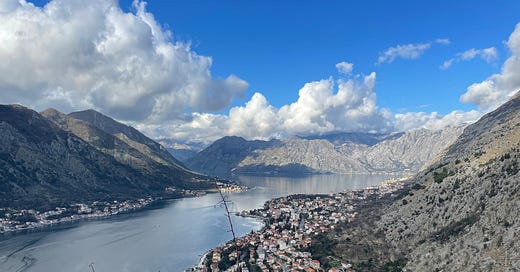Contents
Introduction
Connections In The Balkans
Strength In Numbers
The Future of The Balkans
Concluding Remarks
Bitesize Edition
As I was writing my post last week on the protests in Serbia, I found myself considering the future of the Balkans. Tensions still remain in the region, and I’ll explore the potential sources of these issues.
However, it is also a region of aspiration, be it EU or NATO for many countries in the region. Who seems most likely to join either grouping next?
Finally, I’ll explore why establishing a multiethnic Balkan region is difficult, but not impossible.
Introduction
Back when I wrote my series on the Balkans, I found it was more based on history than the present and the future. However, after spending a month in Bosnia and Herzegovina, Serbia, North Macedonia, Albania, and Montenegro throughout January, my interest in the region has once again piqued, and I am in a position to explore the present day and the future. It’s this endeavour that I’ll undertake today.
Connections In The Balkans
Note: Last week I discussed the protests in Serbia. I’d recommend reading this post first before delving into this one:
In January, I spent a month in the Balkans, where I saw a region still trying to rebuild after the Yugoslav Wars.
Serbia is one nation that maintains close ties with Russia. Serbians have a positive opinion of Vladimir Putin as a strong leader, as evidenced by the sale of souvenirs featuring the Russian president’s face, and murals scattered around the country.
Bosnia and Herzegovina is ethically diverse within the country itself. It is split into two different regions, Bosnia and Herzegovina and Republik Srpska. The country is composed of 50.1% Bosniaks, 30.8% Serbs, 15.4% Croats, and 3.7% of other ethnicities. Importantly, the Bosniaks are Muslim, the Serbs are Orthodox Christian, and the Croats are Catholic. This in itself has contributed to the complex political system in Bosnia and Herzegovina where power is shared between the three groups.
North Macedonia also possesses a population of Albanians, accounting for close to 25% of the total population.
Montenegro is also very diverse, with 45% Montenegrins, 28.7% Serbs, 8.7% Bosniaks, 4.9% Albanians, 0.9% Croats, and 11.8% of other ethnicities. Ruling political parties in Montenegro are easily separated by pro-Western or pro-Serbian attitudes. This promises to create instability and sees Montenegro walking a political tightrope. So much so that in 2019, protests over religious property laws in Montenegro were backed by the Serbian Orthodox Church, and Serbian political parties exploited the protests for their own political gain.
These connections continue to be the foundation for some underlying tensions existing in the Balkans. What strategies are the countries pursuing to lower the likelihood that these tensions spiral out of control?
Keep reading with a 7-day free trial
Subscribe to Geopolitics Explained to keep reading this post and get 7 days of free access to the full post archives.





